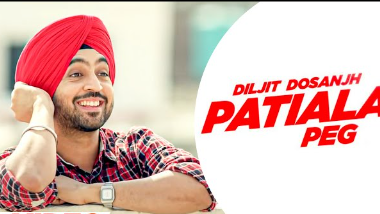

Bhubaneswar: The Dil-Luminati India tour by popular Punjabi singer and actor Diljit Dosanjh proving a mega hit parade as thousands of his fans go crazy over the singer’s powerful voice and Bhangra at the concerts across the country. The popular singer is seen maximising the entertainment of the gung-ho crowd with his popular numbers like “5 Tara”, “Do You Know”, “GOAT”, “Proper Patola””Hass Hass”, “Lemonade”, “Kinni Kinni”, Naina”, “Ikk Kudi”, “Clash”, “Lover”, “Khutti”, and “Patiala Peg” et al.

The smooth run of the singer’s India Tour has hit the Hyderabad bump when on November 15, just before an hour of his show; the Telangana government served a legal notice on Diljit Dosanjh asking the singer to not sing songs that promote alcohol, drugs and violence.
It seems Diljit’s ‘Patiala Peg’ song has courted the controversy, though in another dance number GOAT, he was heard singing “Mitha jatt kaude ghut na mein peewan jattiye” (means I am a good man, I don’t drink alcohol). As per Telangana govt release, the notice is based on a complaint filed by Chandigarh resident who claimed Dosanjh songs promote alcohol, violence in the Delhi concert.
The controversy grows bigger when at his Ahmedabad concert, the singer made a strong retort to the allegation on promoting ‘alcohol’. Taking to his instagram account, Diljit shared a video from the concert, where he criticised the states for paying lip service and not doing enough to stop liquor sales.
“Jitni bhi states hain humare yahan, agar woh saari apnie aapko dry state ghoshith kardeti hai, agle hi din Diljit Dosanjh apni life mein kabhi sharab pe gana nehin gayega. Mein pran karta hoon. Hosakta Yeh? (If all states in the country declare themselves dry state, the next day Diljit Dosanjh in his life time will never sing any sing on alcohol (sharab). I take a vow, can this happen?),” Diljit challenged.
Not satisfied, the popular singer in a witty reply to Telangana govt legal notice said in Ahmedabad doled out another “good offer”, “Ek din ke liye dry ghosit kar do, Mei sharab par nahin gaunga (Declare one-day dry on my show days, I will not sing alcohol songs).”
DILJIT DOSANJH’S CHALLENGE REALITY CHECK
The singer’s jibe at Telangana govt (and other states) over alcohol promotion gets the power from the following facts given below.
Apart from the above facts, Diljit’s dig at Telangana govt has been that when as per a study done by Madras Kamraj University sociology dept, the startling fact to fore is
UNION GOVT REPORT
The Ministry of Social Justice and Empowerment report has the following gave facts.

NFHS-5 REPORT 2021-22
ALCOHOL REVENUE
As per Union govt of India Budget document, Puducherry tops the country where a whopping 34% of the state’s tax revenue comes from excise duty collection on alcoholic beverages.
ODISHA SCAN
As reported above, in alcohol consumption, Odisha sits on the top -5 ‘High’ table. The liquor revenue and sales are eye-popping.
BOTTOM LINE: The bottom line is states are raking the moolah from alcohol sales, and fearing revenue loss they never push the STOP button. The flush in revenue then give them the elbow room to launch populist schemes for votes. But studies have also nailed the side effects of alcohol.
Take a look at a national level study titled “Assessing the Economic Burden of Alcohol Use in India Compared to Excise Taxes on Alcohol Sales” that has the following observations.